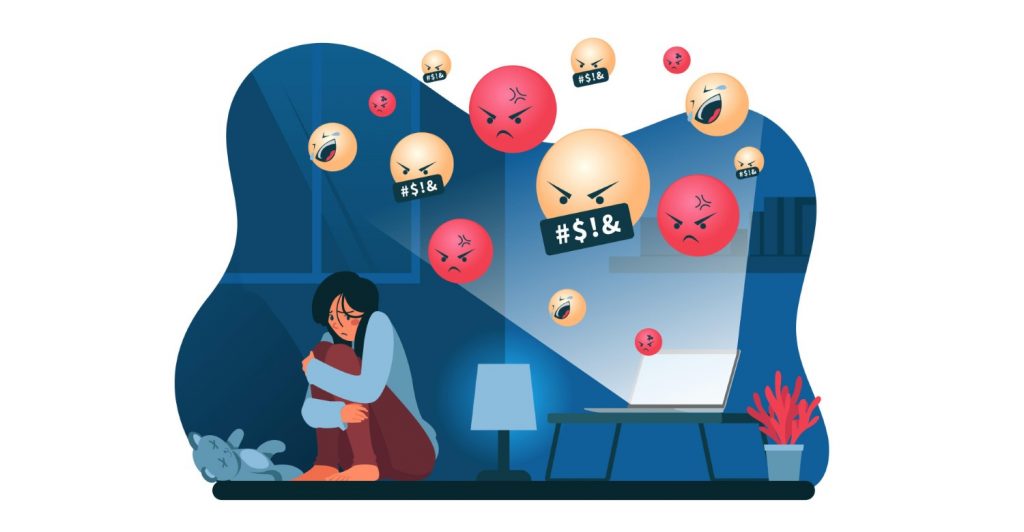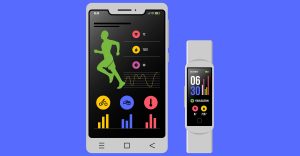Technology has become a crucial part of our daily lives. Screens, devices, and virtual interactions are constantly present. While technology has brought convenience and innovation, concerns about its impact on our mental health have emerged. Understanding technology’s positive and negative effects on our well-being is essential. Mental health apps have become popular, offering stress management and mindfulness tools. Online support groups provide a sense of community and understanding. Virtual therapy platforms make therapy more accessible and reduce stigma. Wearable devices promote mindfulness and stress reduction. However, excessive screen time can lead to loneliness, depression, and disrupted sleep patterns. Social media can connect us but also contribute to feelings of isolation and depression.
Table of Contents
1. The Upsides of Technology on Mental Health
In a world where information is at our fingertips, it is just a matter of time before technology extends its hand to mental health. Mental health apps, for instance, have skyrocketed in popularity, offering tools for stress management, mindfulness, and even virtual therapy sessions. Online support groups have created spaces where individuals can share experiences and find solace in a community that understands their struggles. These resources empower individuals to take control of their mental well-being.
Virtual therapy platforms have emerged as a tremendous advancement in mental health care. These platforms provide a convenient way to connect with licensed therapists through video calls, chats, or emails. This approach breaks down barriers that might have prevented individuals from seeking help, making therapy more accessible and reducing the associated stigma. This confidential and easy way to access treatment has transformed how we address mental health concerns.
Wearable devices and health trackers have gone beyond physical health, delving into mindfulness and stress reduction. Guided meditation, breathing exercises, and stress-level assessments are now at our service, reminding us to pause, breathe, and regain balance amid life’s challenges.

2. The Dark Side of Screen Time: Impact on Mental Well-being
While technology brings benefits, the prevalence of screen time raises concerns. The time we spend glued to screens has increased dramatically, giving rise to worries about its impact on mental well-being. Excessive screen time has been linked to various issues, including increased feelings of loneliness and depression and disrupted sleep patterns. Social media, a double-edged sword, has become a prominent player. It connects us to friends, family, and global events but can also magnify feelings of isolation. Heavy use of social media platforms can cultivate loneliness and contribute to depressive symptoms.
Cyberbullying and Online Harassment: Cultivating Toxic Environments
The ability to communicate from behind a screen has encouraged individuals to engage in hurtful behavior they might avoid in person. Cyberbullying and online harassment pose significant threats to mental health. Victims of cyberbullying experience emotional distress. Constant hateful messages, public shaming, and malicious rumors erode self-esteem and well-being.
The fear of being targeted online can seep into real life, leading to social withdrawal, anxiety, and depression. The unending nature of cyberbullying creates an environment of fear and mistrust, both harmful to mental health.
Addressing this issue requires a shift in digital culture:
- Fostering digital empathy
- and treating others online with the same respect we expect in person
- creates a safer and more supportive online space.
As we forge connections in the digital age, our words, typed on screens, carry real power over the well-being of others.
Fear of Missing Out (FOMO) and its Impact
In the era of constant connectivity, The fear of missing out (FOMO) takes center stage. FOMO is characterized by anxiety over missing exciting events or experiences. As social platforms overwhelm us with curated timelines and highlight reels, they amplify this fear and contribute to feelings of inadequacy.
FOMO is intertwined with how we perceive ourselves in comparison to others. The meticulously crafted online personas we present create unrealistic standards for happiness and success. Scrolling through images of flawless vacations and grand achievements breeds self-doubt, depression, and anxiety.
Managing FOMO requires a healthy relationship with social media. Setting boundaries on screen time and curating our content shield us from constant comparison.
Focusing on our journey rather than others’ highlight reels fosters contentment and improves overall mental well-being.
3. Technology and Inactive Lifestyles: Implications for Mental Health
As screens dominate our lives, the boundary between work, leisure, and rest blurs. The passive nature of technology usage has many implications for physical health, affecting mental well-being. The connection between increased screen time and decreased physical activity is undeniable.
A lazy lifestyle puts us at risk for physical health issues and impacts mental health.
Physical activity boosts mood by releasing endorphins, the “feel-good” hormones; that’s why the Lack of movement deprives us of this mood enhancer.
Extended hours of screen time indoors contribute to “nature deficit disorder,” disconnecting us from the calming effects of the natural world.
Countering the effects of technology-induced lazy habits requires intentional action. Integrating technology into activities like virtual fitness classes and step challenges motivates movement. Acknowledging the connection between physical and mental well-being empowers us to use technology for healthier lives.
4. Children and Adolescents: Vulnerability and Digital Upbringing
As technology continues to unfold, its impact on the mental health of the younger generation deserves careful attention. Children and adolescents are growing up in a digital era vastly different from their parents. While technology offers incredible learning and connection opportunities, it exposes young minds to unprecedented vulnerabilities.
Concerns about early and extensive technology exposure have been raised by experts and parents alike. Spending too much screen time during crucial developmental stages could hinder social skills and emotional regulation acquisition. Research has indicated that children who spend excessive time with screens might be at a higher risk of attention-related disorders.
The impact of screens extends beyond cognitive development, affecting emotional well-being. Cyberbullying, as discussed earlier, is a significant concern for young people. The effect of social media envy and the pressure to conform to online trends can amplify the challenges adolescents already face during this formative period. As their identities evolve, the digital world significantly shapes their self-esteem and self-worth.
Guidance and control from parents play a vital role in remedying these damaging effects. Setting healthy screen time boundaries, having open conversations about online experiences, and encouraging a balance between digital engagement and offline activities empower children to navigate the digital world mindfully. Also, equipping young individuals with critical digital literacy skills enables them to discern healthy online interactions from potentially harmful ones.

5. Navigating the Digital World Mindfully
Digital mindfulness involves using technology with awareness and intentionality rather than letting it control us. We can harness benefits while safeguarding mental health by cultivating a conscious and balanced relationship with our devices.
Setting screen time limits is a core aspect of digital mindfulness. Allocating specific times for work, leisure, and rest helps prevent blurred boundaries and that endless “on” feeling.
Practicing a digital detox, whether dedicating a screen-free day each week or taking breaks during the day, provides a break from digital noise. These moments of disconnection enable us to reconnect with ourselves and the world around us.
Embracing real-world social interactions and self-care practices, like spending time outdoors, exercising, and pursuing hobbies, forms a holistic approach to maintaining mental well-being.
6. The Future of Technology and Mental Health
As technology evolves, its potential to reshape mental health care grows. Emerging technologies like artificial intelligence (AI) hold promise for providing innovative mental health support. AI-driven chatbots and virtual therapists are developed to offer instant interventions.
These tools, available around the clock, can improve mental health care, especially in areas with limited access.
However, integrating AI into mental health care raises ethical concerns, like Ensuring patient privacy, data security, and accuracy of AI-driven interventions. Balancing human empathy with AI efficiency is essential for effective and responsible support.
The trajectory of technology’s role in mental health care is exciting yet uncertain. The evolution of wearable devices, AI-driven interventions, and virtual reality therapies can potentially transform how we approach and treat mental health issues. While we embrace these advancements, maintaining the human aspect of care, human connections, empathy, and understanding remains vital.
7. Navigating the Digital Landscape
Technology’s influence on mental health is complex and multi-dimensional in our lives. The technology’s effects cannot be overlooked, from providing resources, supporting mental health, and fostering loneliness and anxiety. By embracing digital mindfulness and making conscious technological choices, we can confidently navigate this landscape and protect our mental health.
FAQ
Q1: Are mental health apps effective?
A1: Yes, many mental health apps offer tools for stress reduction, mindfulness, and even virtual therapy. However, effectiveness varies based on individual needs and preferences.
Q2: How can I manage screen time for my children?
A2: Setting screen time limits, promoting outdoor activities, and having open conversations about online experiences can help guide children’s digital interactions.
Q3: Can technology worsen feelings of loneliness?
A3: Excessive social media use can amplify feelings of loneliness due to constant comparison and “envy.” Balancing online interactions with real-world connections is essential.
Q4: What is digital mindfulness
A4: Digital mindfulness involves using technology intentionally and being aware of its impact on mental well-being. It includes setting boundaries, curating content, and fostering offline connections.
Q5: How can I support someone experiencing cyberbullying?
A5: Offer a supportive and non-judgmental space for them to discuss their experiences. Encourage them to block or report the aggressor, and consider involving trusted adults if necessary.




